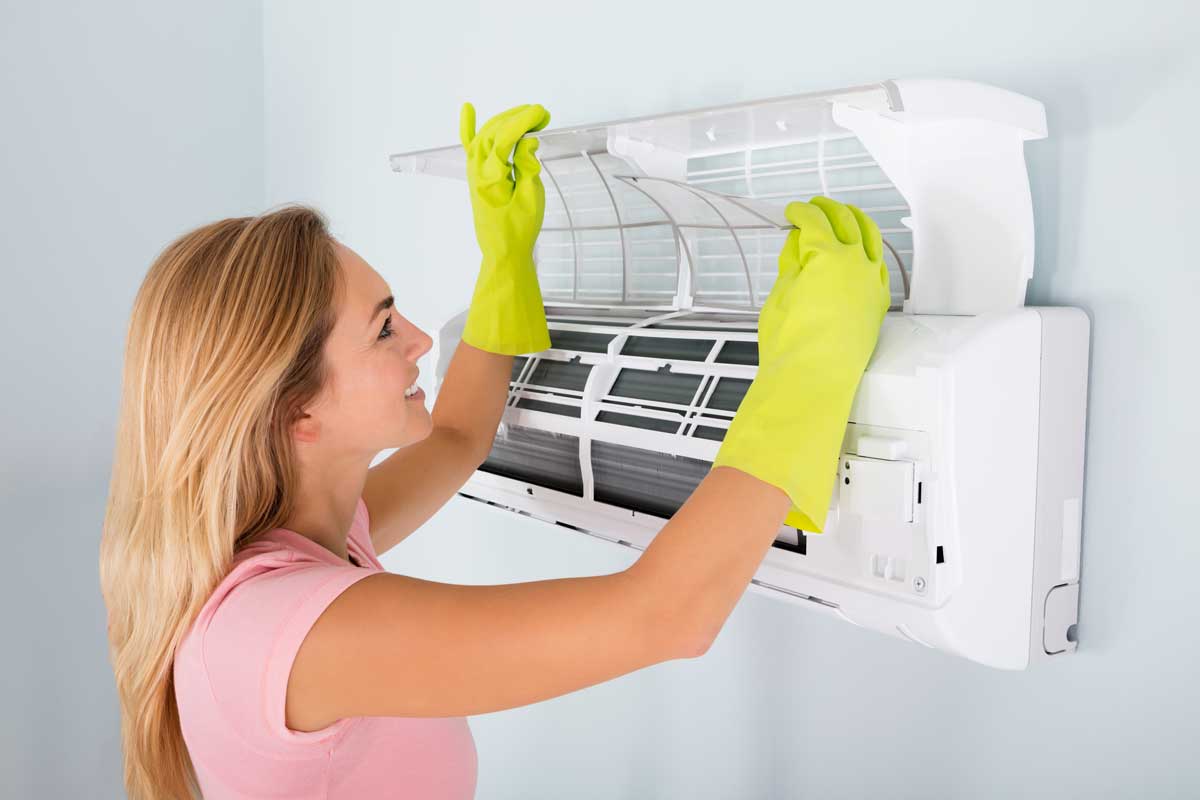How To Clean Mould From An Air Conditioner

If you’ve noticed a musty smell when your air conditioning kicks in, you’re not alone. Queensland’s humid climate creates the perfect breeding ground for mould growth in air conditioners, posing serious health risks to your family.
While basic filter maintenance is something you can handle yourself, mould removal requires professional expertise.
Here’s what you need to know about keeping your system clean, recognising when mould has taken hold, and why professional treatment is essential.
Why mould loves your air conditioner
When your air conditioning system runs, it creates condensation and moisture buildup inside the unit. Combined with Queensland’s humidity levels, these dark, damp conditions are exactly what mould needs to thrive.
At TSR, we’ve been dealing with Gympie’s challenging climate for over 35 years, and we’ve seen how quickly mould can take hold in poorly maintained systems. The problem is, once mould establishes itself deep in your system, simple cleaning won’t fix it.
Health risks you shouldn’t ignore
Living with a mouldy air conditioner isn’t just unpleasant, it’s a genuine health concern. Mould growth affects one in three homes in Australia, and occupants of damp or mouldy buildings have up to a 75% greater risk of respiratory symptoms and asthma. Children, elderly relatives, and anyone with compromised immune systems are particularly vulnerable.
We recently worked with a Gympie family whose young son’s asthma symptoms were worsening each summer. After inspecting their system, we found significant mould contamination in areas they couldn’t access themselves. Once we properly treated and serviced the system, his symptoms improved dramatically.

Warning signs of mould in your system
Catching mould early makes treatment easier. Watch for these signs:
- Musty or earthy odour when your unit operates
- Visible black, green, or white spots on filters or vents
- Increased allergy symptoms among family members
- Reduced airflow and cooling efficiency
- Water leaks or excessive moisture around the unit
If you’re experiencing any of these symptoms, it’s time to call in the professionals.
What you can do: Basic filter maintenance
Regular filter cleaning is the best way to prevent problems before they start. Here’s your simple monthly routine:
- Turn off your air conditioner at the wall
- Open the front panel and carefully remove the filters
- Gently vacuum off any dust buildup
- Rinse the filters under lukewarm water
- Allow them to dry completely before reinstalling
For a more detailed guide on general air conditioner cleaning and maintenance, check out our complete cleaning guide.
Important: If you spot any mould on your filters or smell that distinctive musty odour, don’t attempt to clean it yourself. Mould spores can spread during cleaning, and you may not be addressing the underlying problem.
Why mould removal needs professional expertise
Here’s what many people don’t realise: visible mould on your filters or vents is usually just the tip of the iceberg. Mould grows deep inside your system in areas you can’t see or reach, including:
- Evaporator coils and fins
- Drain pans and drainage lines
- Internal ductwork
- Blower compartments
These internal components require specialised equipment, cleaning agents, and expertise to treat properly. DIY attempts often spread mould spores throughout your home or damage delicate components, making the problem worse and potentially voiding your warranty.

What professional mould treatment involves
When you call TSR for mould treatment, we don’t just wipe down the visible surfaces. Our comprehensive service includes:
- Complete system inspection to identify all affected areas
- Professional-grade anti-fungal treatment for internal components
- Proper containment to prevent spore spread
- Drainage system cleaning and testing
- Identification and correction of underlying moisture issues
- System performance check to ensure everything’s working properly
A client recently told us she’d been battling recurring mould in her ducted system for months. She’d cleaned the accessible vents repeatedly, but the problem kept returning. When we inspected the system, we discovered extensive mould deep in the ductwork that she simply couldn’t reach. Our professional treatment finally solved the problem.
Prevention is your best strategy
Once we’ve treated your system professionally, you can help prevent mould from returning:
- Clean your filters monthly during heavy use periods
- Schedule professional servicing at least once a year
- Run your system in fan mode for 10-15 minutes after cooling to help dry out internal components
- Maintain good home ventilation and controlled indoor humidity levels
Don’t wait for the problem to worsen
Mould in your air conditioning system won’t go away on its own, and it will only spread further into your system over time. The longer you wait, the more extensive (and expensive) the treatment becomes.
If you’ve noticed any warning signs or it’s been over a year since your last professional service, get in touch with our team or give us a call on 07 5482 8100. We’re available 24/7 to assess your system and provide professional mould treatment that actually solves the problem.
Keep your family safe and your air conditioning system healthy with expert care from TSR.
Please Share This
Related Posts

Summer’s Here Early! Our Top Tips On How To Keep Your House Cool In Summer

Cold Room Troubleshooting: Your First 60 Minutes Emergency Action Plan

